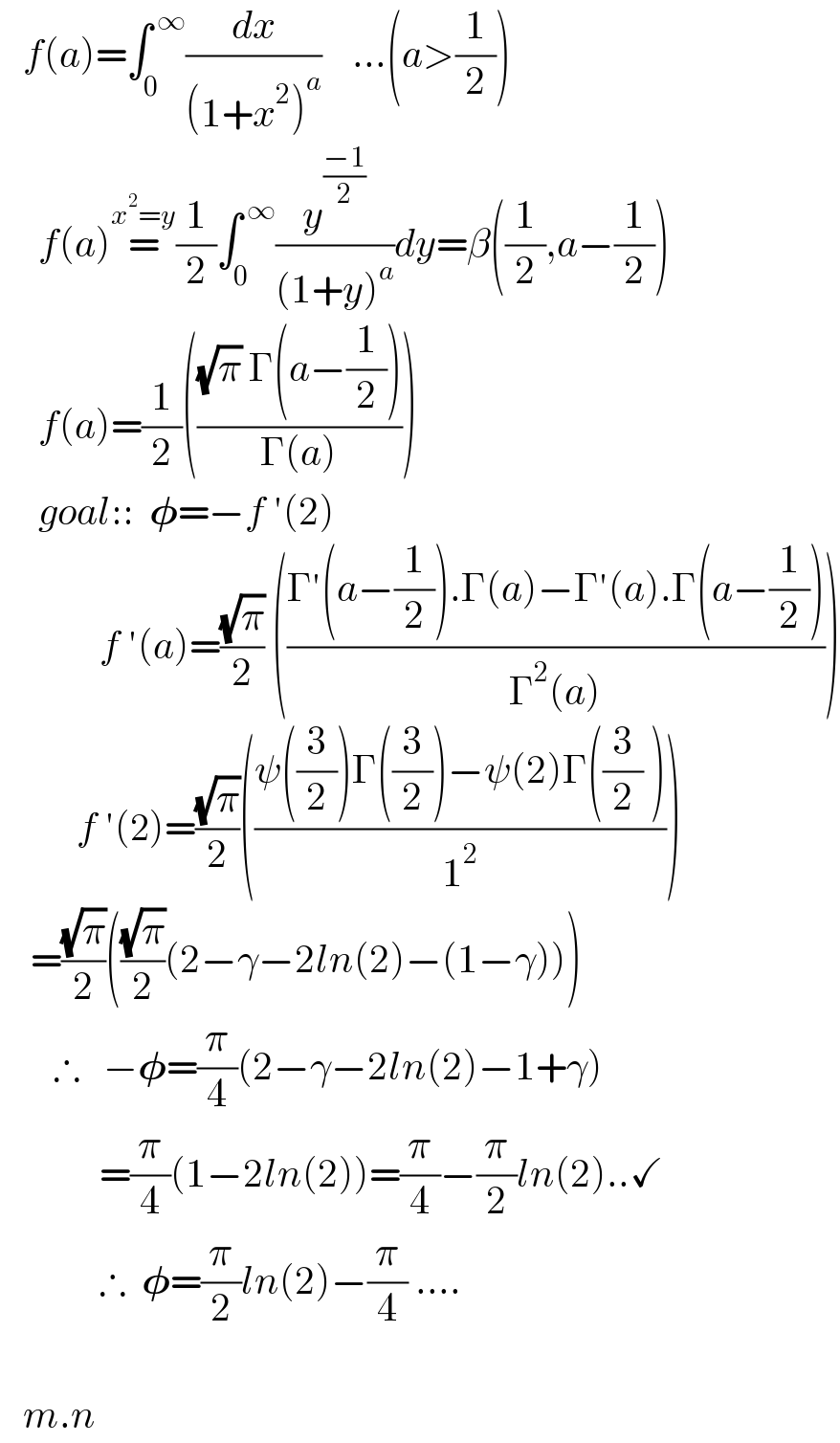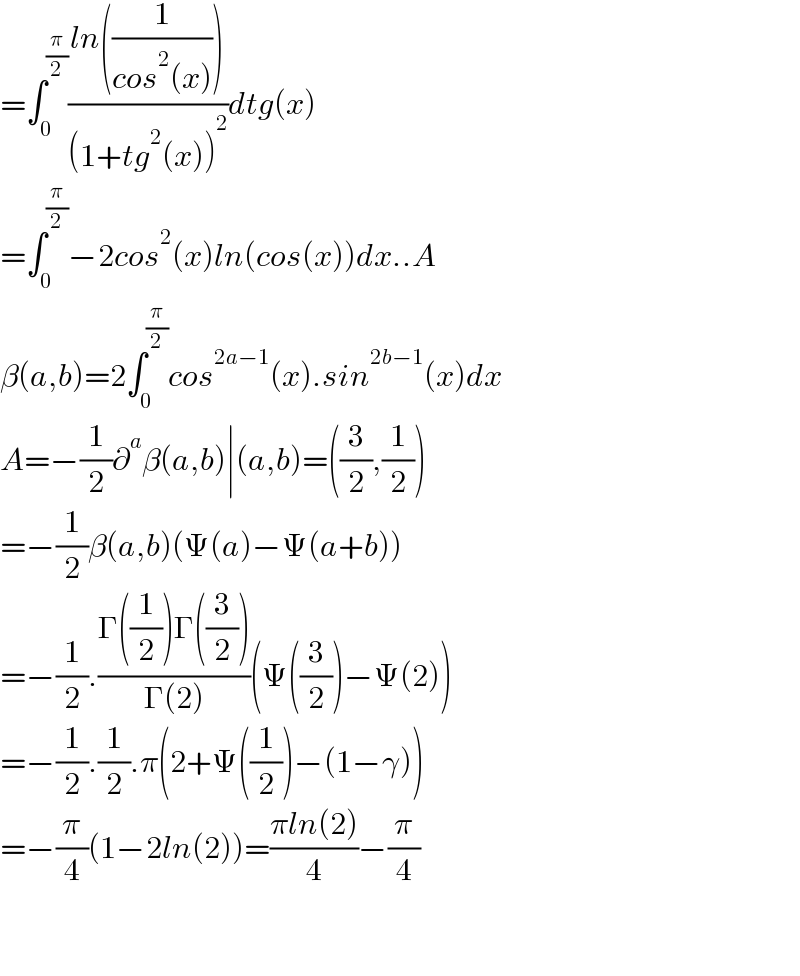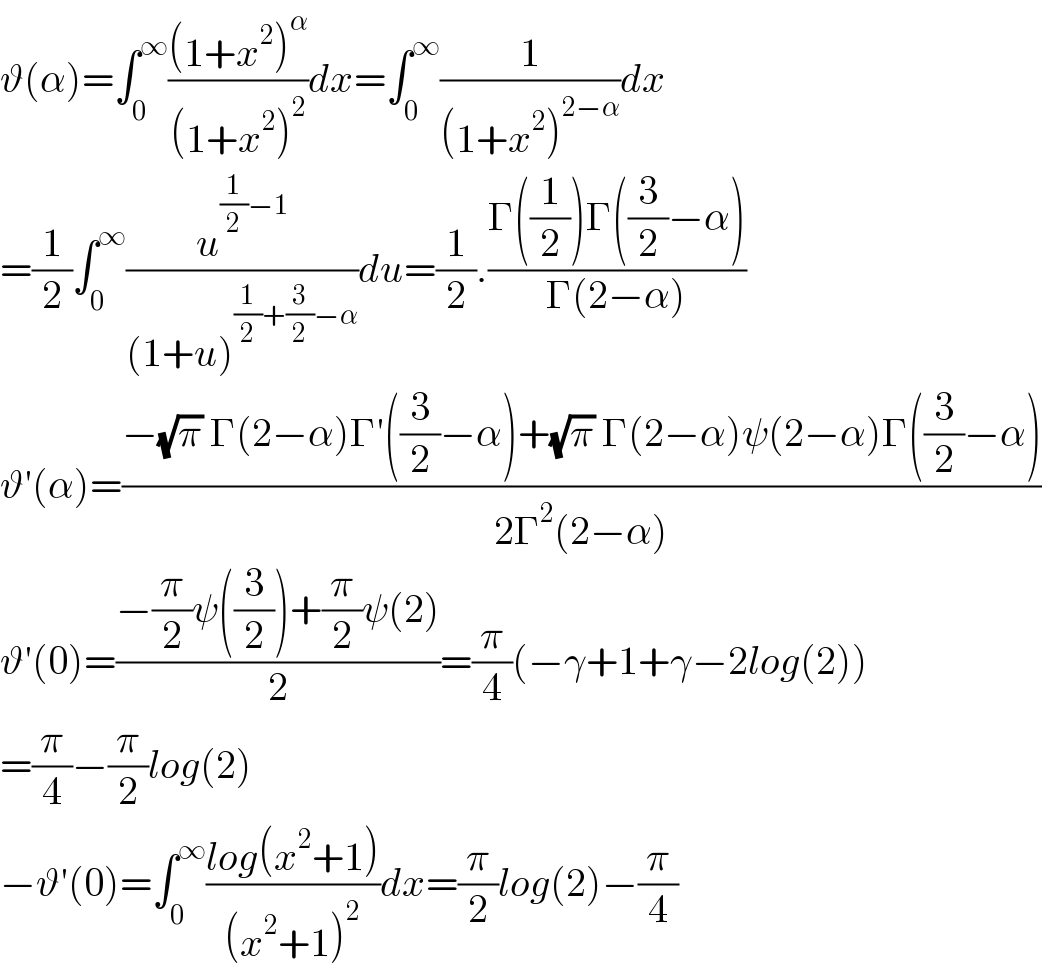
Question and Answers Forum
Question Number 136555 by mnjuly1970 last updated on 23/Mar/21

Answered by mnjuly1970 last updated on 23/Mar/21

Answered by mindispower last updated on 23/Mar/21

Commented by mnjuly1970 last updated on 23/Mar/21

Answered by Dwaipayan Shikari last updated on 23/Mar/21

Commented by mnjuly1970 last updated on 23/Mar/21

